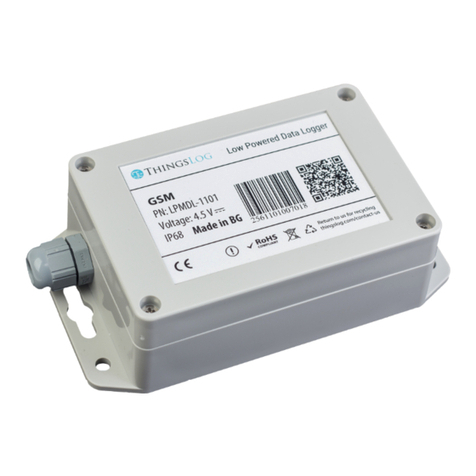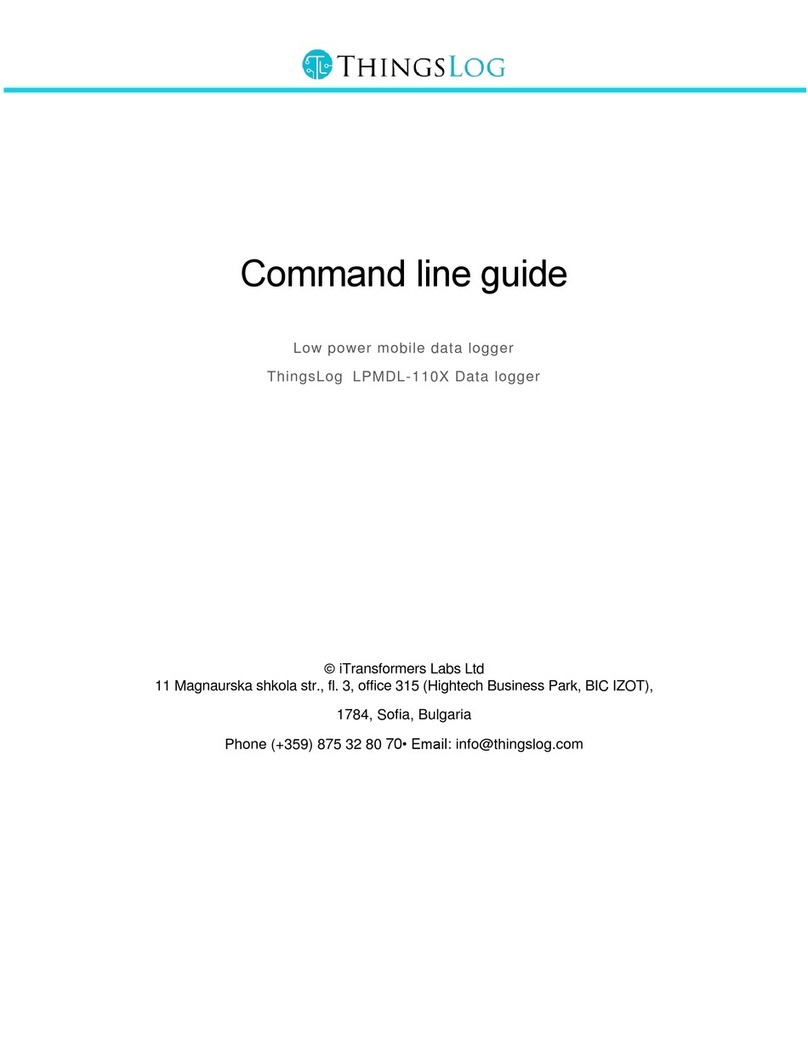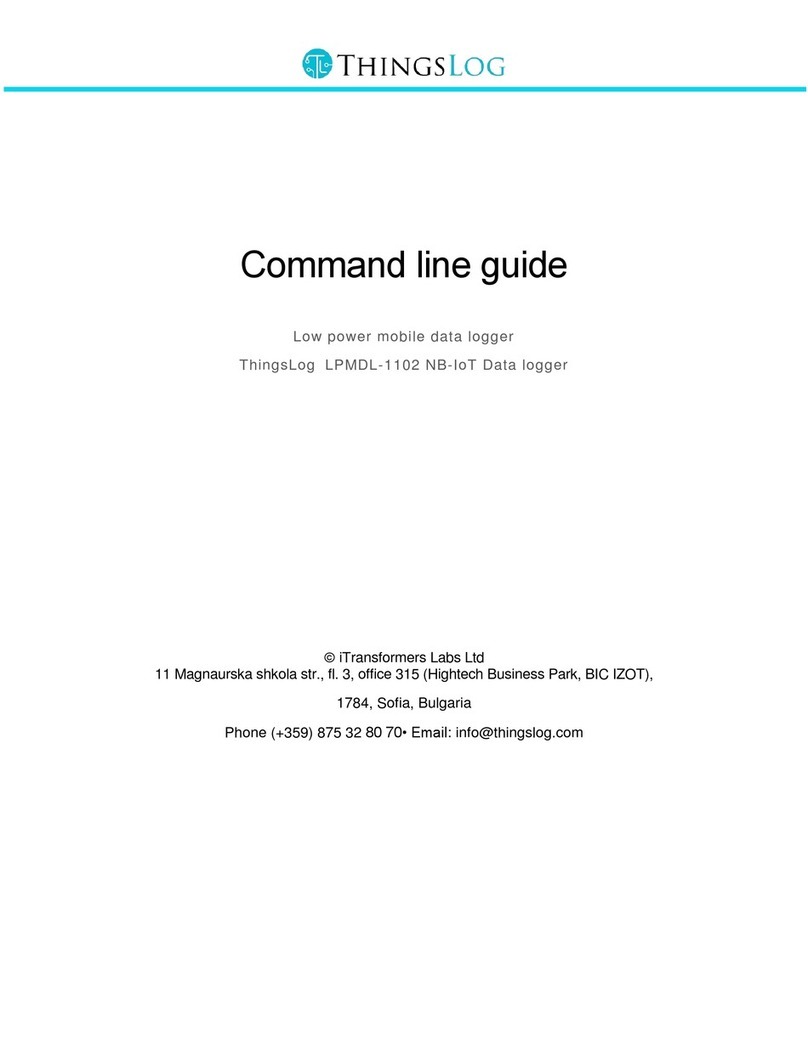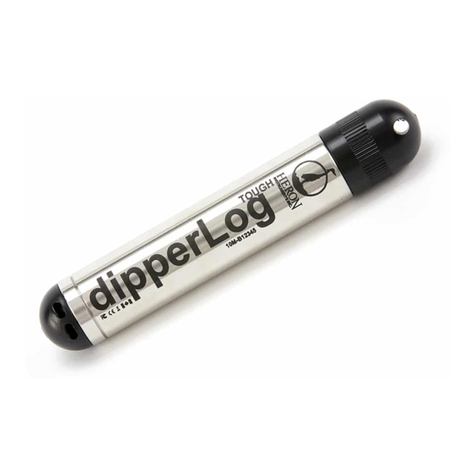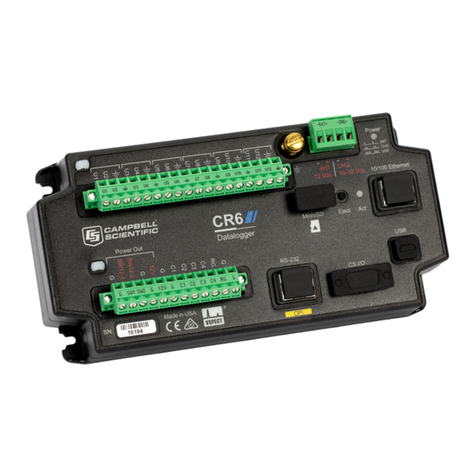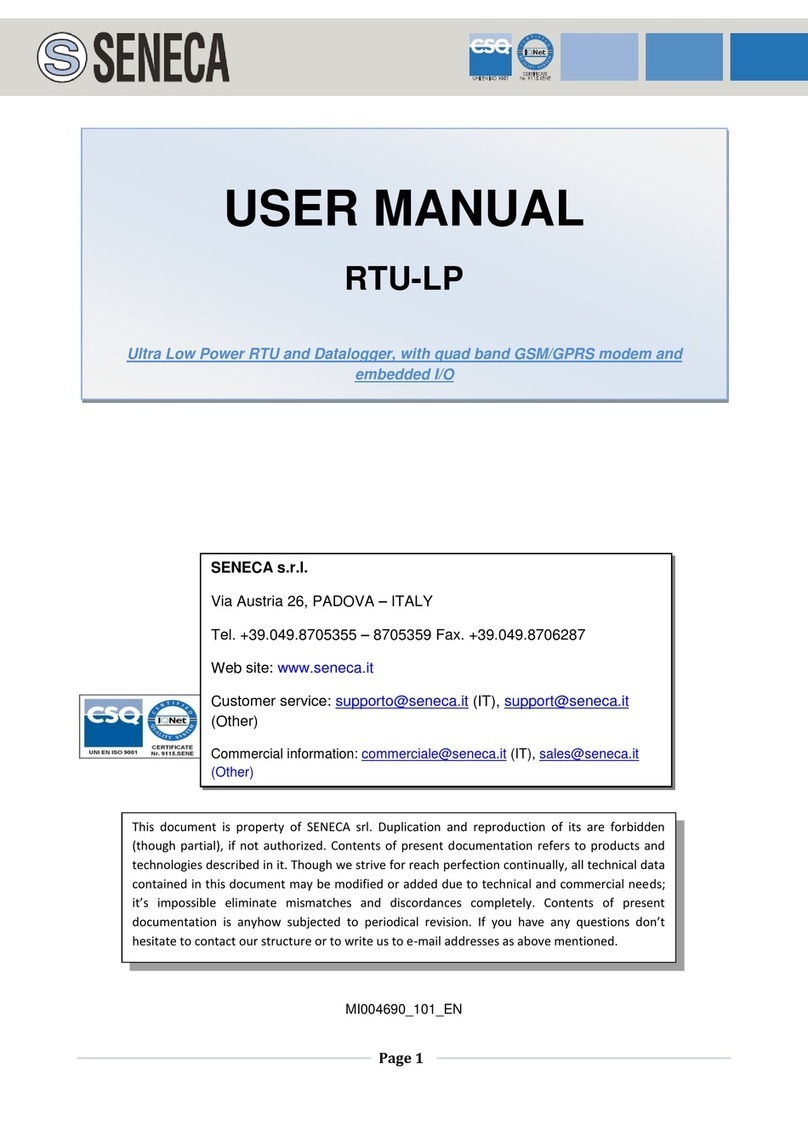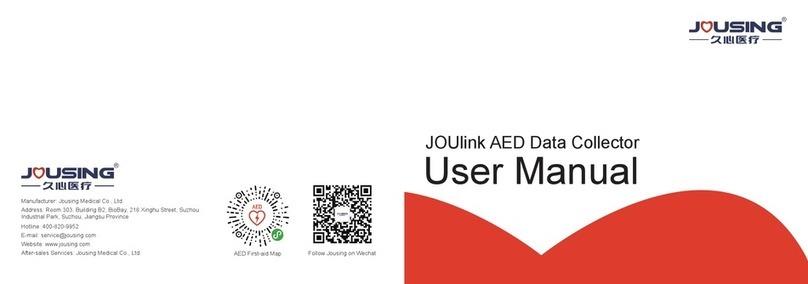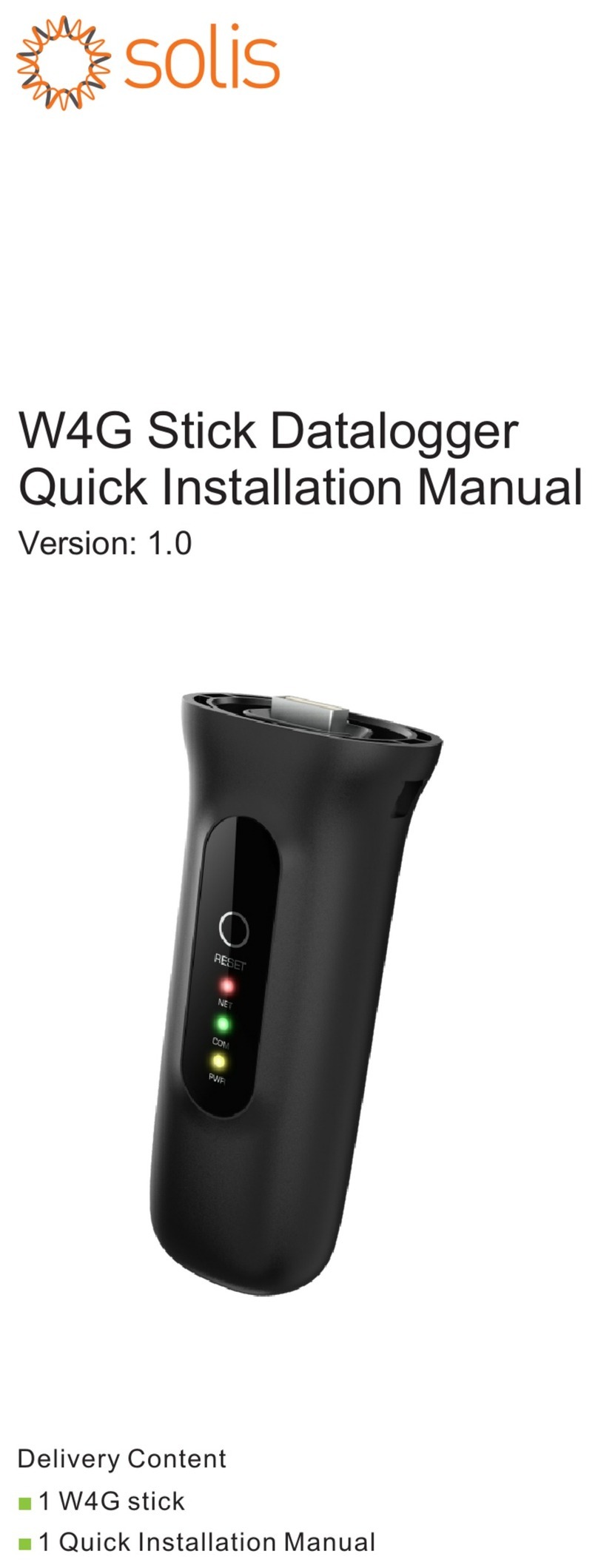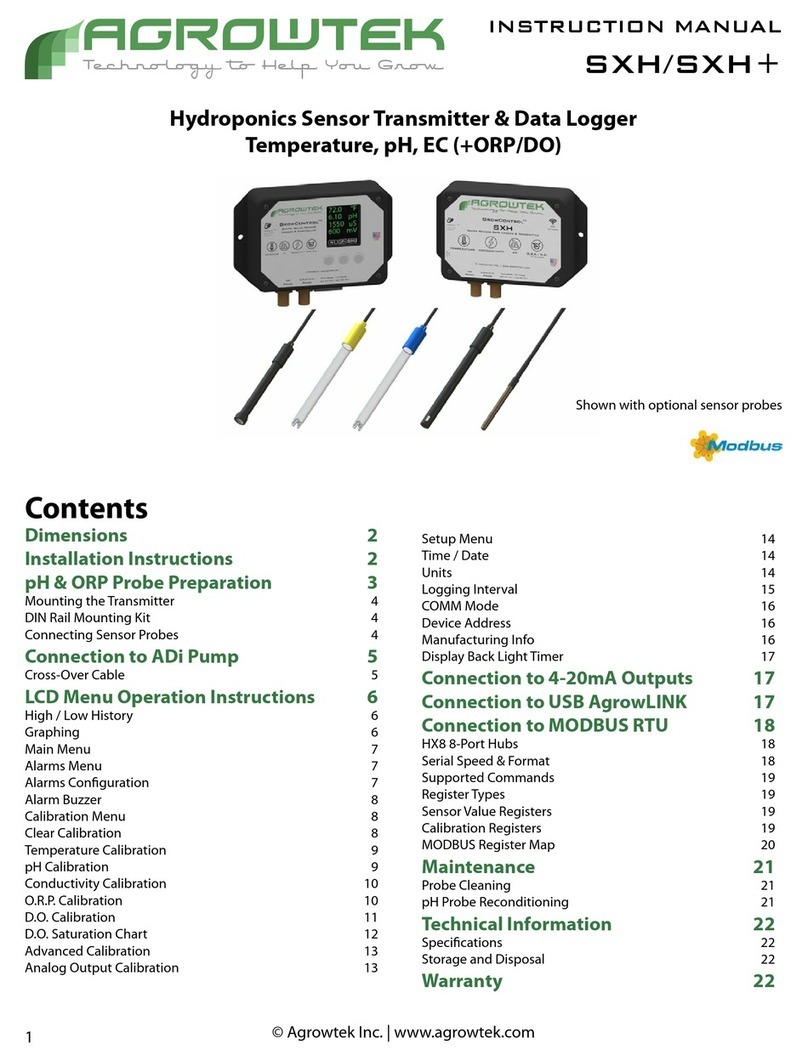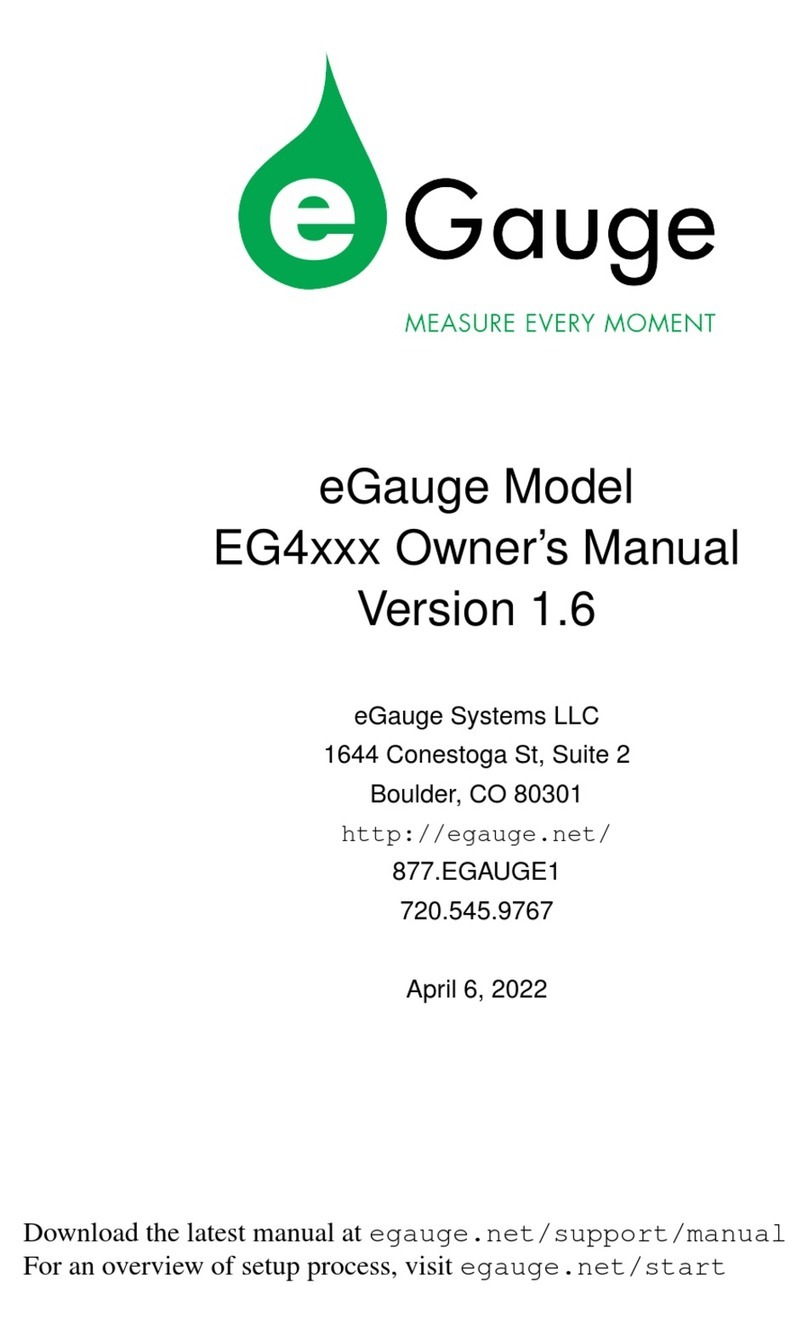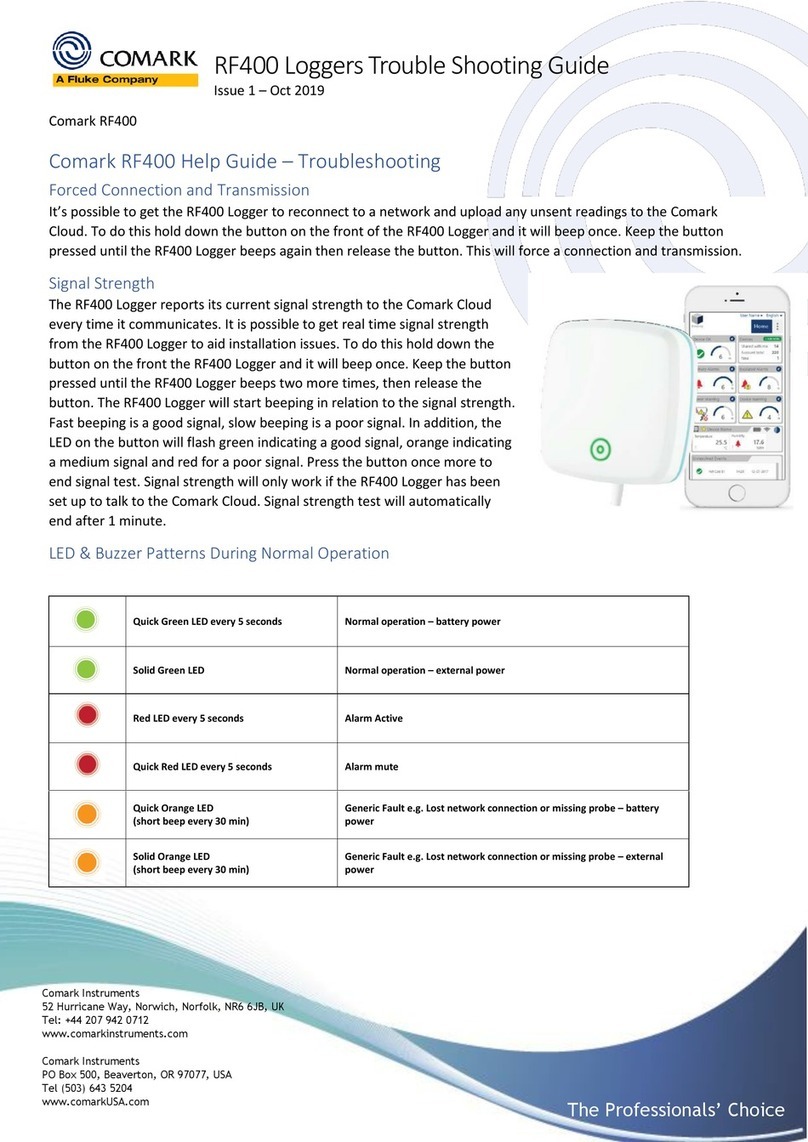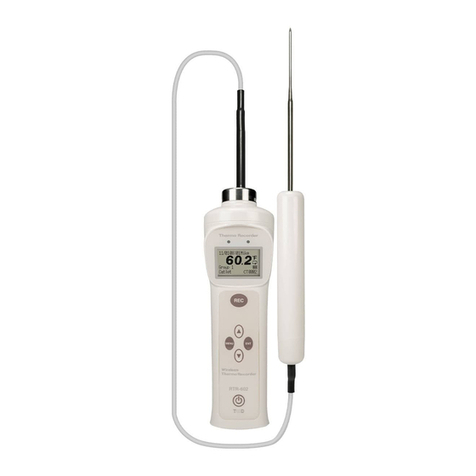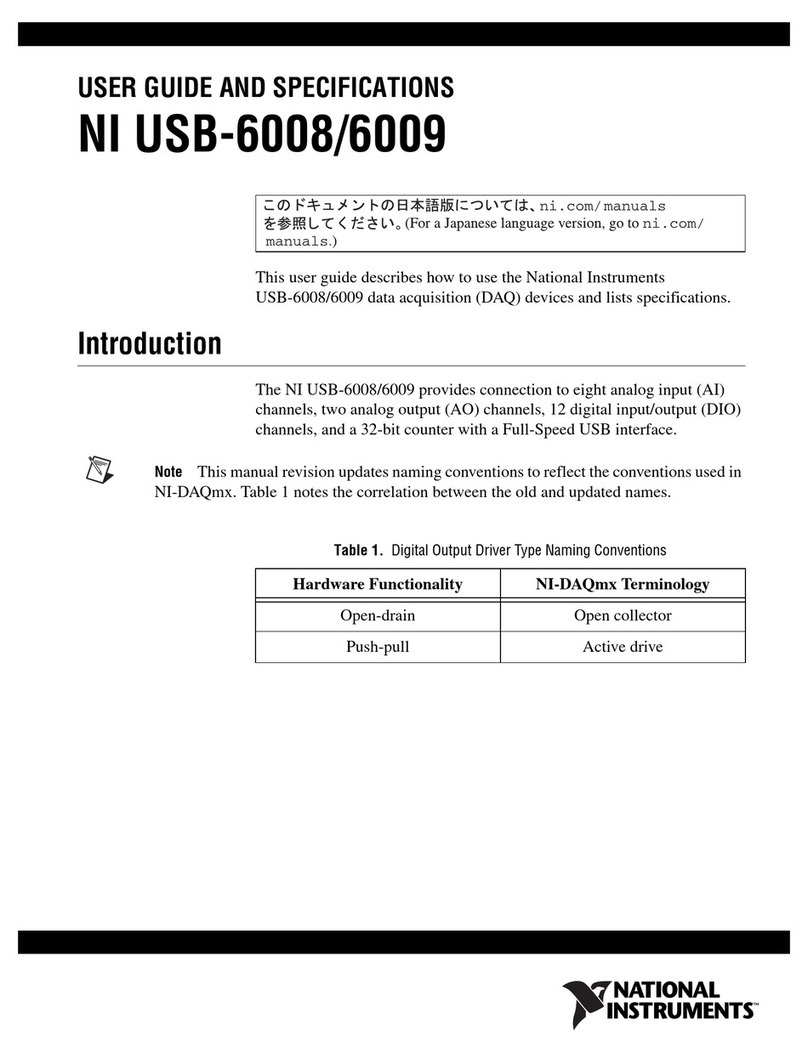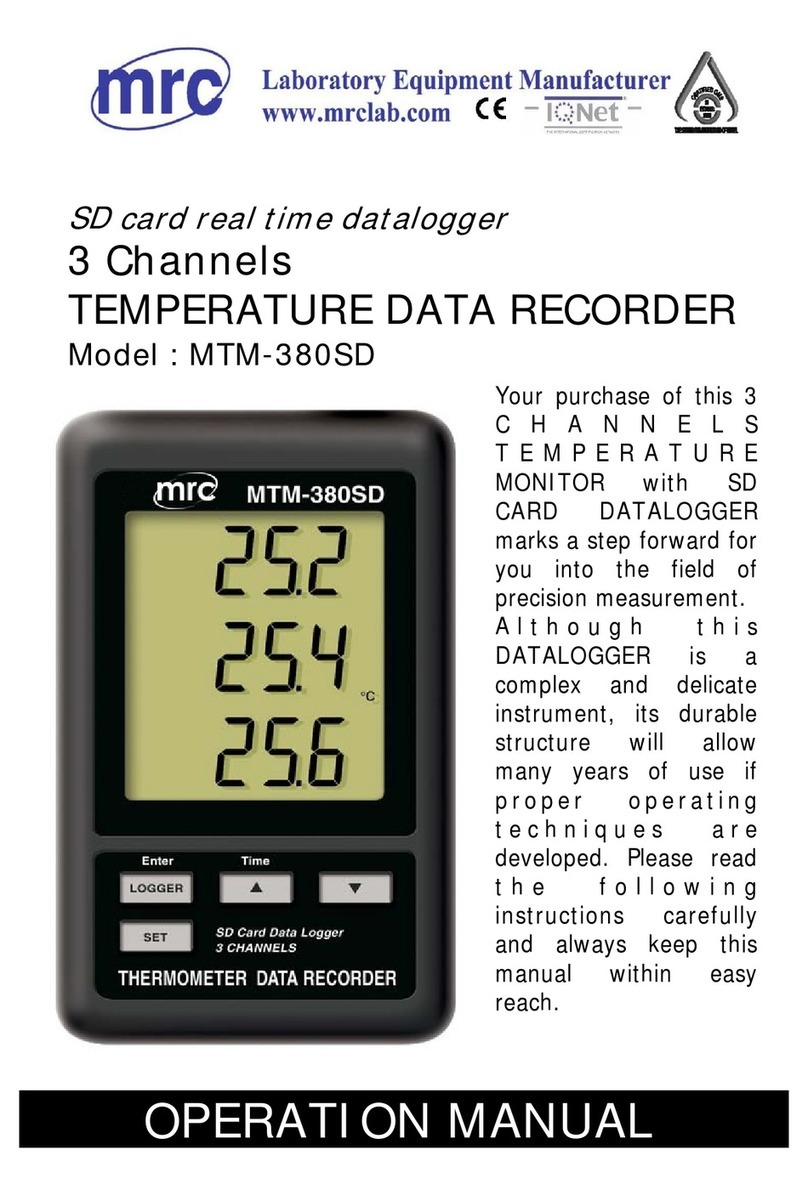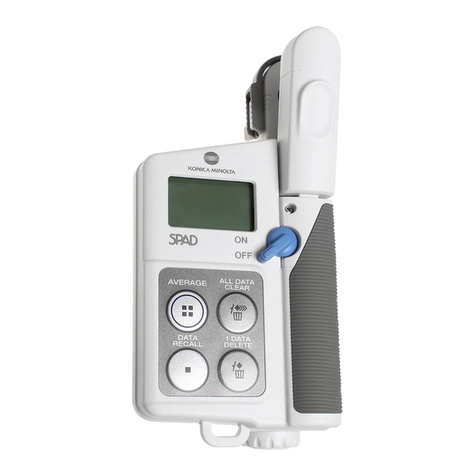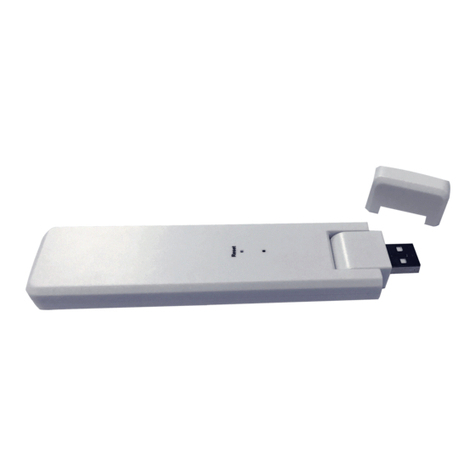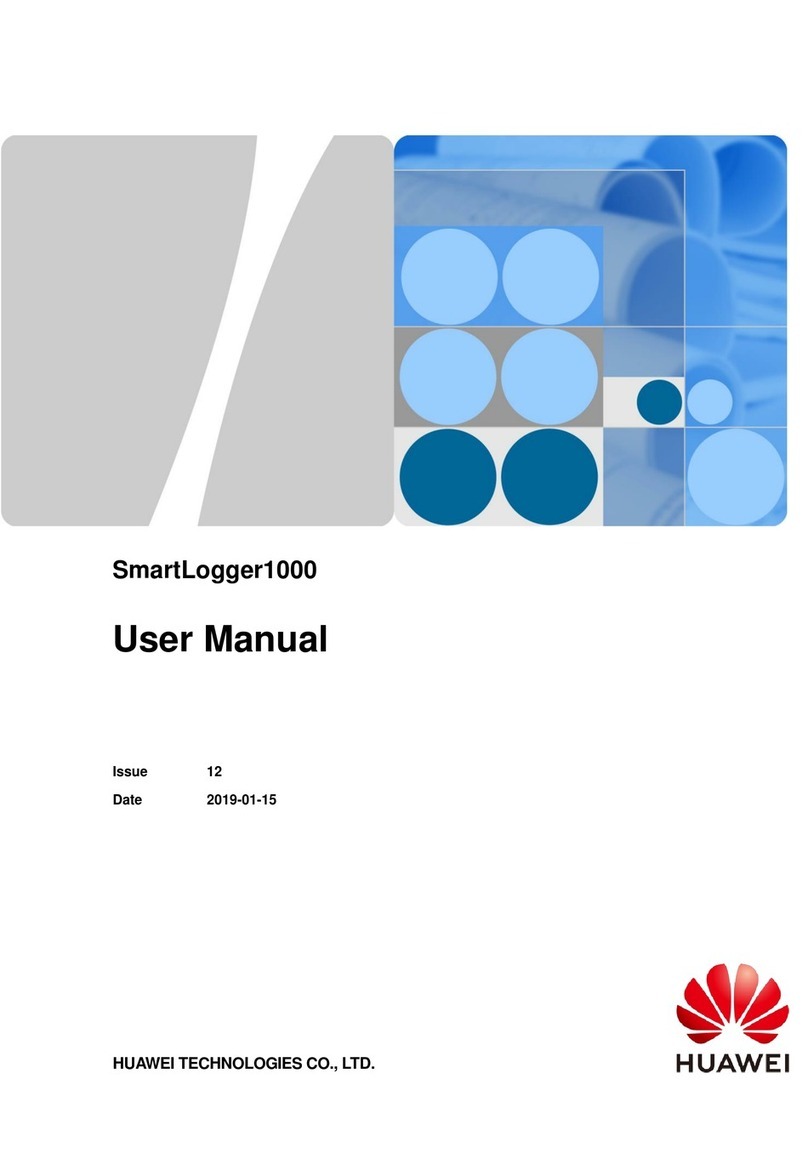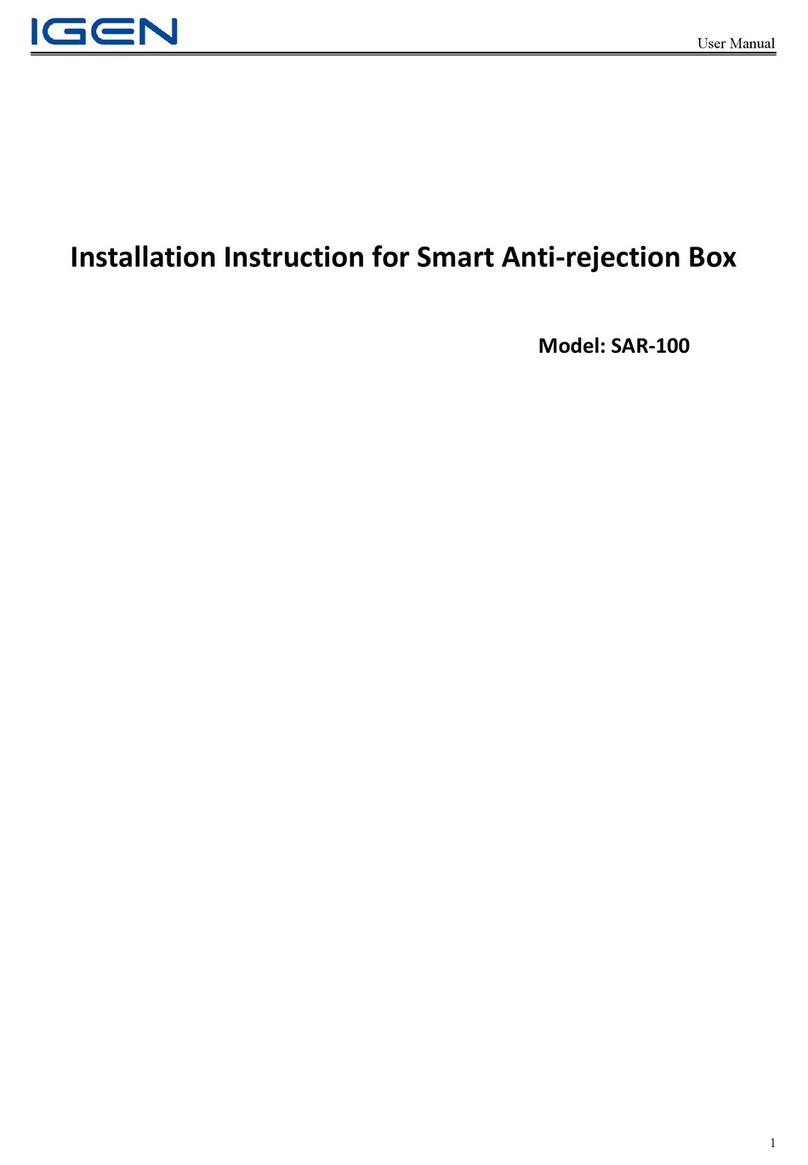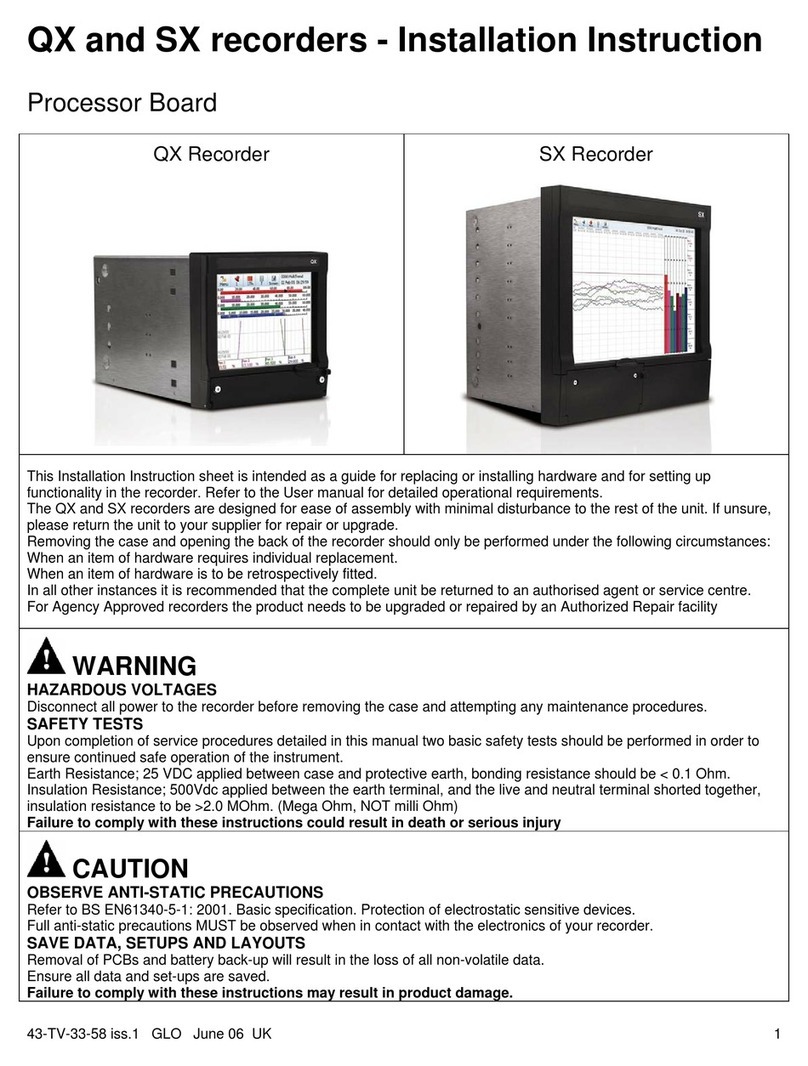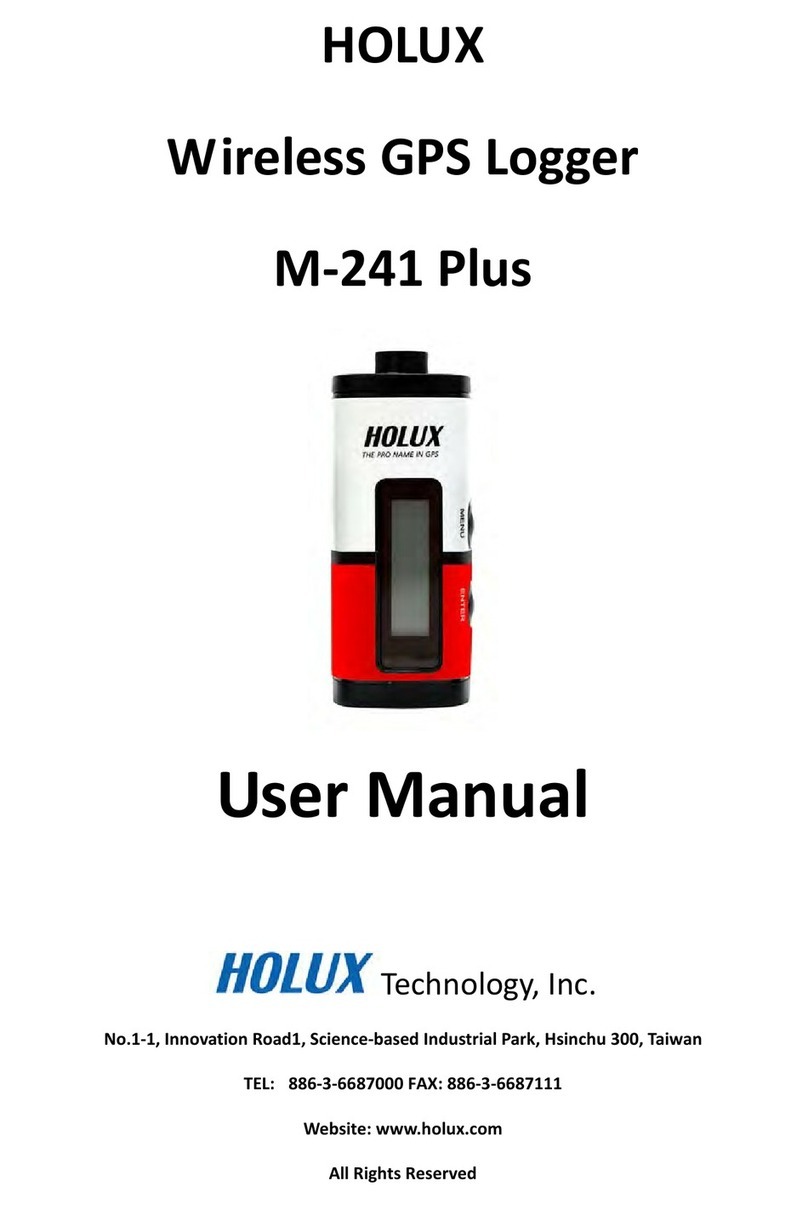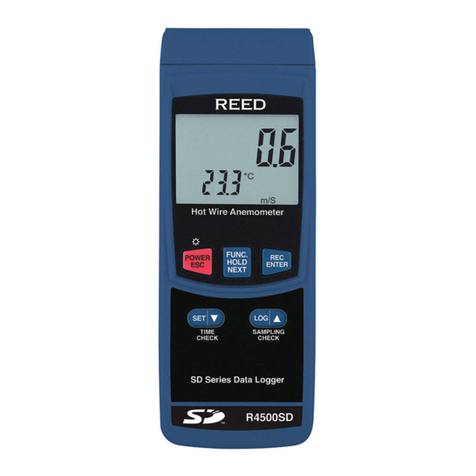ThingsLog LPMDL-1102 User manual

User Manual
Low power mobile data logger
ThingsLog LPMDL-1102
NB-IoT Data logger
© iTransformers Labs Ltd
11 Magnaurska shkola str., fl. 3, office 315 (Hightech Business Park, BIC IZOT),
1784, Sofia, Bulgaria
Phone (+359) 875 32 80 70• Email: [email protected]
Visit us at www.thingslog.com; (+359) 875 32 80 70; [email protected]

Contents
Overview 3
Technical specification 3
Functional specification 4
Safe and Healthy instructions 5
Physical installation 7
Input/Output ports 8
Replacing the batteries 10
User guide 10
Associating logger to a profile 10
Network coverage and service 11
Initial configuration ThingsLog LPMDL-1102 11
Normal operation mode & short functional description 14
Readings 14
Flow graph 14
Cumulative graph 15
Data export 15
Normal operation dashboard 16
Visit us at www.thingslog.com; (+359) 875 32 80 70; [email protected]

1 Overview
ThingsLog LPMDL-1102 is a universal, low power mobile data logger able to meter various kinds of pulse
meters and analog sensors. The logger is transmitting the metered data over 4G/NB IoT.
LPMDL-1102 has the following key characteristics:
Optimal data transmissions - LPMDL-1102 is able to transmit the data over a two way 4G/NB IoT network in
an optimal for the battery way. That allows the logger to meter per minute, to transmit a couple of times per
day and still to achieve more than 10 years of battery life.
Intelligence - the data is transmitted over a widely distributed, cellular network and is automatically
gathered in ThingsLog platform.
Pulse metering -LPMDL-1102 has ability for an independent counting of pulse output meters for water, gas,
power and heating. With a single data logger you can meter two meters for example for cold and hot water
or if your meters are in proximity distance you can meter with a single device gas, power and heating.
Analog sensors metering - LPMDL-1102 has two extra inputs for connecting analog sensors with 4-20 mA
output. An example could be connecting two pressure sensors or one pressure and one temperature sensor.
Combined monitoring - LPMDL-1102 can fulfill use cases where with a single logger have to be monitored
one water meter and two pressure sensors. For example monitoring of pressure reduction areas by
measurements of pressure sensors before and after the pressure reduction valve and its water meter.
Alarms and notifications - LPMDL-1102 together with the ThingsLog platform is able to monitor
consumption and notify the customer or the utility company for leaks, high or low consumption, fraud or
thresholds bridging of certain sensor value or a combination of a sensor and metered value.
Application - LPMDL-1102 fulfills various use-cases in water, power and gas distribution utilities but also
many other use-cases in property management, hotel, manufacturing, condominium sub-metering or in
common need is spread.
Ability to work in any environment -LPMDL-1102 has IP68 dust and leakage protection and is suitable for
any kind of home or industrial usage.
2 Technical specification
Length
132.3 mm / 5.2 in
155 mm / 6.1 in
Visit us at www.thingslog.com; (+359) 875 32 80 70; [email protected]

Height
52 mm / 2.04 in
Width
70 mm / 2.75 in
Weight
130 gram
Temperature range:
-40 - +60 °C
Frequency
B1 @H-FDD: 2100MHz
B3 @H-FDD: 1800MHz
B8 @H-FDD: 900MHz
B5 @H-FDD: 850MHz
B20 @H-FDD: 800MHz
B28 @H-FDD: 700MHz
Transmit power
23dBm±2dB
Sensitivity
129dBm±1dB: -
Cable length
1m, 2m, 3m, 4m, 5m
Physical data transmission layer
NB IoT
MAC layer
Single Tone: DL: 25.2kbpsUL: 15.625kbps
Multi Tone: DL: 25.2kbpsUL: 54kbps
TBS/2 HARQ*: DL 125kbpsUL 150kbps
Dust & Water protection
IP68
Battery power
3.6 V, 1 A or size C lithium battery
Table I Technical specification
3 Functional specification
●Pulse metering: the logger supports pulses generated by reed contacts, hol sensors or S0 pulse
outputs of water, gas and electricity meters
●Analog sensor metering: The logger supports analog sensors with output from 4 to 20 mA such as
pressure sensors like vika, IFM and others
●Data transmission: LPMDL-1102 support NB-IoT . Data is transmitted over raw UDP socket
●Low powered: Preinstalled interchangeable long life battery able to support more than 10000
transmissions of millions of individual counter values
●Average battery life: 10 years
●Built-in antenna
●Reconfigurability over the air: ability to reconfigure the logger reading and transmission rates over
the air
● Secured configuration
Visit us at www.thingslog.com; (+359) 875 32 80 70; [email protected]

● Replacable micro sim card
●Certified for both industrial and home usage
4 Safe and Healthy instructions
Important
information
Please read the complete information, the specifications, the installation
instruction and the electrical interconnect schema prior to working with this
product.
For your own health and safety and for the equipment to function correctly
please ensure that you understand completely the contents of this guide, prior
installation, configuration, operations or profilactics.
CE
From license point of view, unauthorized modifications or additions are not
authorized.
Terms of use
The data logger is intended for use in the following environmental conditions:
●for use indoors or outdoors without prolonged exposure to direct UV
radiation
●for altitudes up to 2000 m
●for ambient temperatures from -40 ° C to + 60 ° C, with continuous
exposure to temperatures of -20 to -40 ° C not recommended
●for relative humidity of 4% to 100%
●for supply voltage deviation of up to + 20% and -15% of declared voltage
●for use under the overvoltage category I;
●for environment with pollution degree 3 (PD3).
Health and safety
rules for installation
All installation work must be performed in accordance with the local regulations
on health and safety at work in electrical systems as well as the regulations
governing the electrical system and networks.
Only engineers or technicians with product expertise that has previously read
and understood this guide should install this product.
Visit us at www.thingslog.com; (+359) 875 32 80 70; [email protected]

Installation and
maintenance
Installation is done in accordance with the instructions in this document.
Incorrect installation may cause damage to the logger and inaccurate
measurements. That is why the installation, the initial configuration must be
done with due attention.
Incorrect installation results in violation of warranty conditions and failure of the
warranty.
An example of improper installation is to connect the pulse or analog input of
the device shortly or to a power source
Transport and
storage
Store in dry rooms without access to water or other liquids at temperatures not
lower than -20 ° C and not higher than 60 ° C in the original package.
Transportation is allowed to happen accidentally at temperatures below -20 ° C
but not more than 8 hours. Protect against shocks and avoid extreme
conditions.
Subsequent
maintenance
Once installed, the data logger should be cleaned using a dry or lightly
moistened cloth, explicitly prohibiting the use of aggressive and abrasive
detergents.
Every six months, it is desirable for the user of the logger to check the enclosure
integrity and the integrity and waterproofness of the cable and connecting
terminals to the measured device or sensor.
Recycling
When recycling the product and its disposal, local and national legislation and
regulations must be observed. If you hesitate, please return the appliance, we
will recycle it for you.
Table II Health and safety instructions
Visit us at www.thingslog.com; (+359) 875 32 80 70; [email protected]

5 Physical installation
Figure 1 Logger outlook and dimensions
Visit us at www.thingslog.com; (+359) 875 32 80 70; [email protected]

Figure 2 Example installation schema for interconnecting LPMDL-1102 with a water meter and two pulse sensors
●Prior to install the logger please review the health and safety instructions described in chapter 3.
●The data logger is coming with an installation manual and a kit through which it can be attached
to a firm surface.
●In order to attach the logger you will need a wall with stiff, flat surface close to the meter or the
sensor which you would like to measure.
●Mark and drill holes with size 4x25 mm for attaching the logger to the wall.
●Attach the logger input/outputs to the connecting cable.
●Attach the corresponding connecting cable input/outputs to the meters/sensors.
6 Input/Output ports
LPMDL-1102 has 12 input/output ports. To access the ports unscrew the board from the bottom of the
logger enclosure and lift it up.
Visit us at www.thingslog.com; (+359) 875 32 80 70; [email protected]

Figure 3 Logger input/output ports
Figure 4 LPMDL-1102 wiring scheme
Visit us at www.thingslog.com; (+359) 875 32 80 70; [email protected]

Figure 5 Wiring scheme for pressure monitoring with two sensors and external battery source
7 Replacing the batteries
LPMDL-1102 requires one size A 3,6V batteries. ThingsLog platform has built-in battery monitoring
capabilities. The batteries have to be replaced if the voltage level is under 3.1 V.
Battery is soldered on to the PCB and in order to replace the batteries logger have to be sent to us
for battery replacement.
8 User guide
8.1 Associating logger to a profile
1. In order to perform the initial configuration you should have an account for ThingsLog IoT platform. If
you don’t have an account please go to https://iot.thingslog.com/signup and register to the platform.
2. Once registered go to Downloads section or directly visit https://iot.thingslog.com/thingslog.apk in
order to get Thingslog Andriod Application.
3. Login into the Andorid app with your username and password.
4. Scan the QR code on the logger label.
Visit us at www.thingslog.com; (+359) 875 32 80 70; [email protected]

Figure 6 Area to be scanned
5. If the scan is successful the android app will be able to register your logger to your profile. Note that
you can register once logger to only once. If you want to register the device to another profile please
contact us at [email protected].
6. Once the device is registered you can continue with the initial configuration.
8.2 Network coverage and service
In order to work ThingsLog data loggers need network connection. Prior performing the initial
configuration ensure that there is NB IoT network coverage in your area. If you are not sure which network
operator has been used with your ThingsLog device please contact us at [email protected].
8.3 Initial configuration ThingsLog LPMDL-1102
1. Connect your logger to your meters and sensors as described in section physical installation.
2. Navigate to meny “All Devices” - and pick your newly added logger.
Visit us at www.thingslog.com; (+359) 875 32 80 70; [email protected]

Figure 7 Menu “Devices”
3. From the menu choose “Config” then a similar configuration dialog will appear.
Figure 8 Configuration dialog
Visit us at www.thingslog.com; (+359) 875 32 80 70; [email protected]

On the top you can see the logger id, date when it was configured for a last time and current
configuration status.
Then follows the common section for all inputs/outputs.
●Counts threshold
- Number of counter/sensor readings to store in memory. Once that number is
reached a transmission will happen
●Record period
- Could be Minute, Hour or Day. This is the period on which the logger will log in
memory the reading values from the pulse inputs or the period on which it will perform low
power reading of its analog current inputs.
●Every
- Frequency of reading - could be 1,2,3,5,10,15,20,30 in the measurement time unit
selected in “Record period”
4. For each pulse sensor (a meter connected to a pulse input) slide the slider to the right and enter:
●Digits
- Number of digits - equals to the number of digits on the display of the meter
●Fraction
- Number of digits after the decimal pointer on the display of the meter
●Initial counter
- Initial value of the counter of the meter
5. To enable analog sensor readings (connected to the analog inputs) just slide the slider to the right
6. Delete old counters
- once you are ready with the inputs configuration decide do you want to keep
the old values or not. If not choose “NO” else chose “YES”.
7. Once you are ready press “Start Setup” button.
This will start a 1000 seconds counter. You will have to touch the logger with a magnet prior the counter
expiry. This will put the logger into configuration mode and it will try to obtain its configuration from the
server.
8. If the logger is able to do so you will be able to see the following message on your screen.
Figure 9 Confirmation of successful configuration
Visit us at www.thingslog.com; (+359) 875 32 80 70; [email protected]

If the configuration process is unsuccessful and the device stays in “Not configured” mode please
ensure that the device has been placed in an area with propper NB IoT coverage. If you are not sure that such
is available in your area please let us know at [email protected]. But please note that if there is no NB
IoT signal there are only a few things you can do.
8.4 Normal operation mode & short functional description
Once configured the logger will start to collect and transmit readings from the attached sensors. The
logger supports the following main functionalities:
8.4.1 Readings
From the readings menu the user has access to the readings gathered by the logger. The user can select a
time interval and also can export the readings to a file in csv file format.
Figure 10 Readings
8.4.2 Flow graph
Flow menu allows the user to visualize the consumption flow of the meter captured by the logger.
Visit us at www.thingslog.com; (+359) 875 32 80 70; [email protected]

Figure 11 Flow consumption graph
8.4.3 Cumulative graph
Figure 12 Cumulative consumption graph
8.4.4 Data export
The system supports readings data export from a certain time range in CSV file format.
Visit us at www.thingslog.com; (+359) 875 32 80 70; [email protected]

Figure 13 Data export in CSV file format
8.5 Normal operation dashboard
After login the user will be redirected to a “dashboard” where the user can verify the operational
status of the loggers.
Visit us at www.thingslog.com; (+359) 875 32 80 70; [email protected]

Figure 14 operational status dashboards
ThingsLog
ТМ
supports the following kinds of alarms:
●NO_ZERO_CONSUMPTION - alarm for non zero consumption. The non zero consumption is defined
as condition in which the logger is detecting consumption over certain threshold over certain long
period of time. For example the logger has detected a NON zero consumption over 6 consecutive
hours.
●HIGH_CONSUMPTION - alarm indicating consumption higher than a certain preconfigured level over
certain period of time. For example 1m
3
over 1 hour.
●MISSED_TRANSMISSION - alarm indicating that the transmission from the logger did not happen.
Visit us at www.thingslog.com; (+359) 875 32 80 70; [email protected]

●LOW_CONSUMPTION - alarm indicating that the consumption for certain time interval is lower than
the expected one.
●ALL_ZERO_CONSUMPTION - alarm signaling zero consumption through certain time period. For
there is no consumption for 24 hours. Could potentially indicate a fault meter.
●DEVICE_REMOVED - alarm indicating that the meter has been disconnected from the logger.
●LOW_BATTERY - alarm indicating that the battery of the logger is under 20%.
Visit us at www.thingslog.com; (+359) 875 32 80 70; [email protected]
Other manuals for LPMDL-1102
1
Table of contents
Other ThingsLog Data Logger manuals
